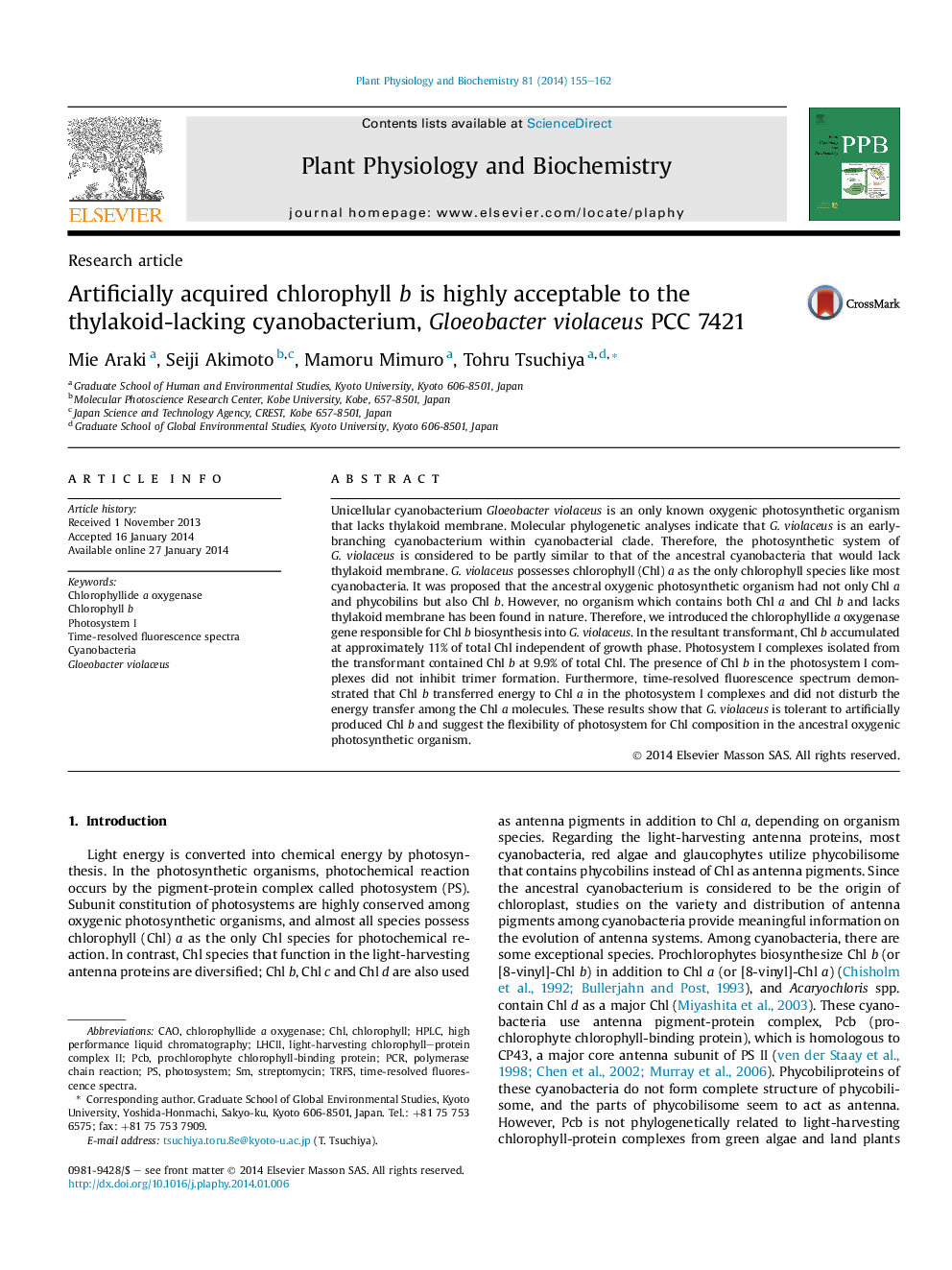| کد مقاله | کد نشریه | سال انتشار | مقاله انگلیسی | نسخه تمام متن |
|---|---|---|---|---|
| 2015860 | 1541940 | 2014 | 8 صفحه PDF | دانلود رایگان |

• Chlorophyllide a oxygenase gene was introduced into Gloeobacter violaceus.
• The resultant transformant cells accumulated chlorophyll b.
• Photosystem I from the transformant contained chlorophyll b similar level to cells.
• The presence of chlorophyll b did not inhibit the trimer formation of photosystem I.
• Chlorophyll b in the photosystem I efficiently transferred energy to chlorophyll a.
Unicellular cyanobacterium Gloeobacter violaceus is an only known oxygenic photosynthetic organism that lacks thylakoid membrane. Molecular phylogenetic analyses indicate that G. violaceus is an early-branching cyanobacterium within cyanobacterial clade. Therefore, the photosynthetic system of G. violaceus is considered to be partly similar to that of the ancestral cyanobacteria that would lack thylakoid membrane. G. violaceus possesses chlorophyll (Chl) a as the only chlorophyll species like most cyanobacteria. It was proposed that the ancestral oxygenic photosynthetic organism had not only Chl a and phycobilins but also Chl b. However, no organism which contains both Chl a and Chl b and lacks thylakoid membrane has been found in nature. Therefore, we introduced the chlorophyllide a oxygenase gene responsible for Chl b biosynthesis into G. violaceus. In the resultant transformant, Chl b accumulated at approximately 11% of total Chl independent of growth phase. Photosystem I complexes isolated from the transformant contained Chl b at 9.9% of total Chl. The presence of Chl b in the photosystem I complexes did not inhibit trimer formation. Furthermore, time-resolved fluorescence spectrum demonstrated that Chl b transferred energy to Chl a in the photosystem I complexes and did not disturb the energy transfer among the Chl a molecules. These results show that G. violaceus is tolerant to artificially produced Chl b and suggest the flexibility of photosystem for Chl composition in the ancestral oxygenic photosynthetic organism.
Journal: Plant Physiology and Biochemistry - Volume 81, August 2014, Pages 155–162